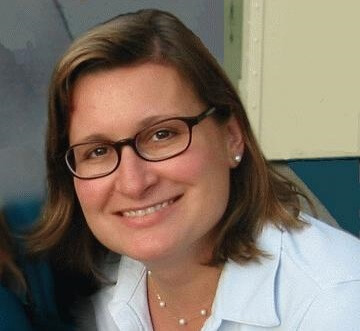
Yolanda Gil
The USC Information Science Institutes Yolanda Gil has been has been appointed to the Advisory Committee of the Computer and Information Sciences and Engineering Directorate of the National Science Foundation.
The advisory committee “provides advice on the impact of NSF support policies and programs on the CISE community; provides oversight on program management and performance; and provides advice to the CISE Assistant Director on special issues, forming ad hoc subcommittees to carry out needed studies as necessary,” according to its mission statement.”Needless to say, a position on this committee is an important one, with the potential for great impact on the computer science research community and on the future direction of computer science in the United States, if not the whole world,” commented ISI Executive Director Herbert Schorr, in a statement congratulating Gil.
Besides her post as associate director of the Institute’s Intelligent Systems Division, one of the largest centers of AI research in the country, Gil is also a research associate professor in the USC Viterbi School of Engineering department of computer science. She came to ISI in 1992, after earning her Ph.D. in computer science from Carnegie- Mellon University.
While not connected with it, the announcement follows closely on Gil’s recent standout performance as co-chair of the Twenty-First National Conference on Artificial Intelligence in Boston in mid-July.
Sponsored by the American Association for Artificial Intelligence, the annual meeting is the premier conference in its subject, but had been suffering declining attendance in recent years as the subject of AI has spawned numerous specialty gatherings.
Gil and co-chair Ray Mooney of the University of Texas- Austin made a concerted effort to reverse the trend — with a remarkable result. Attendance for AAAI 21 was up more than 50 percent vis-a-vis AAAI 20.
ISI participation and leadership of AAAI has been a hallmark of the organization since its inception. Robert Balzer of ISI chaired the very first AAAI conference, in 1980, Interest in AI has heightened because 2006 is the 50th anniversary of the coining of the term, “artificial intelligence,” at a now-legendary conference that included Claude Shannon, Marvin Minsky, and John McCarthy.
Gil and Mooney’s innovations included new tracks for emerging themes (including integrated cognitive architectures), “nectar” tracks for reports from specialist conferences, a track for senior members to write more philosophically than would ordinarily be allowed, a new kind of poster session, and new professional development opportunities for grad students.
The conference continued the usual robot competitions (including a robot beauty contest), invited talks, grad student forum, tutorials, and other proven draws. A highlight was a poker tournament among poker-playing artificial intelligences. The consensus at the conference was that the latest entry was livelier and more rewarding than any in recent memory, and many people credited the efforts of the co-chairs for the result.
Implementing these innovations went far beyond the ordinary conference chair duties of managing hundreds of reviews coordination the activity of a huge program committee.
Gil is a widely known researcher in AI and other areas of computer science. She is principal investigator and project leader of ISI’s Interactive Knowledge Capture research group, focusing on intelligent interfaces for projects concerning knowledge-based planning and problem solving, information analysis and assessment of trust, semantic annotation tools, agent and software choreography, and community-wide development of knowledge bases.
A recent focus is assisting scientists with large-scale applications throughout the design of workflows and their distributed execution and the use of AI techniques to support large-scale science.
Published on August 23rd, 2006
Last updated on August 9th, 2021











